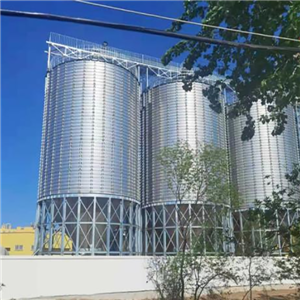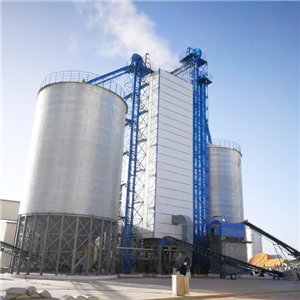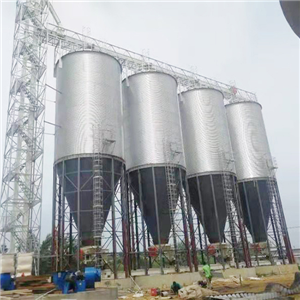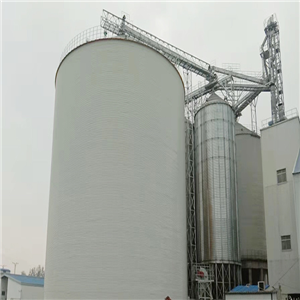Cement Production Process Steps
Cement is one of the most common and important building materials. It is a key ingredient in concrete that increases the viscosity of concrete, effectively locking sand and gravel into the mixture. However, many people may not know the production process of cement. Understanding the production steps of cement can help us better understand the manufacturing process of this important building material. Liaoning Qiushi Silo Equipment Engineering Co., Ltd. today introduces the main steps of cement production.

1. Crushing And Pre-Homogenization
The first step in cement production is to crush and pre-homogenize the raw materials. Limestone and other raw materials extracted during the mining process are initially crushed to reduce their particle size for subsequent processing. The crushed raw materials are sent to the pre-homogenization bin and mixed evenly by mechanical and air flow to ensure the homogeneity of the raw materials, laying the foundation for the subsequent production process.
2. Raw Material Preparation
Raw material preparation is a key step to ensure the quality of cement. At this stage, the crushed raw materials are further ground and mixed with other necessary minerals (such as clay, iron ore, etc.) to form a uniform raw material powder. During the raw material preparation process, precise proportioning and mixing ensure that the chemical composition of the final cement product meets the requirements.
3. Raw Material Homogenization
Homogenization is an important link to ensure the consistent quality of raw materials throughout the production process. The raw material powder is fully mixed through the homogenization system to make the chemical composition and physical properties of each batch of raw materials uniform. This process ensures the stability and performance of the final cement by adjusting the proportion and mixing method of the raw materials.
4. Preheating And Decomposition
The homogenized raw materials are sent to the preheater for preheating and decomposition at high temperature. The main purpose of this stage is to remove moisture and volatiles from the raw materials and preheat the raw materials to a certain temperature so that they can enter the calcination process in the rotary kiln. The high efficiency of the preheater improves energy utilization and reduces production costs.
5. Cement Clinker Calcination
The preheated raw materials enter the rotary kiln for calcination, which is the most critical link in cement production. In the rotary kiln, the raw materials are heated at temperatures as high as 1400 to 1500 degrees Celsius, undergoing chemical reactions to form cement clinker. This process requires precise temperature control and continuous material movement to ensure the quality and performance of the clinker.
6. Cement Grinding
After the calcined cement clinker is cooled, it is sent to the grinding mill for grinding. At this stage, the clinker is ground into fine powder to form the final cement product. Some auxiliary materials, such as gypsum, may also be added during the grinding process to adjust the setting time and other properties of the cement.
7. Cement Packaging
Finally, the ground cement is transported to the packaging system for packaging. The cement is packed into bags or bulked into silos, ready for delivery to various markets and projects. The efficiency and accuracy of the packaging process ensures the quality of the cement and the timeliness of delivery.
The cement production process covers multiple steps including crushing and pre-homogenization, raw material preparation, raw material homogenization, preheating and decomposition, cement clinker burning, cement grinding and cement packaging. Each link is crucial to ensure the quality and performance of the final cement product. As a company specializing in silo design and manufacturing, Liaoning Qiushi Silo Equipment Engineering Co., Ltd. provides high-quality silo solutions that play an important role in cement production. If you have any needs for silos and other equipment, please feel free to contact us.




